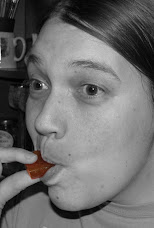I found the simplest one available, assembled my new banner and here we are with a new layout. I could have spent hours looking through backgrounds, but when I was looking up my mochi recipe this morning I learned a Japanese saying - “Hana yori dango” - which means, “dumplings over flowers.” It refers to the value of practical things over aesthetics. So, after fidgeting on here for way too long, I got back to rotating the laundry and picking out my mochi recipe.
What is mochi? The most definite answer I have is that mochi is an acquired taste. Or more accurately, it’s an acquired texture. The taste is subtle and sweet. And tasty, in my humble opinion. The main ingredient of mochi is glutinous rice flour, so the texture is unlike anything else I’ve ever eaten. It is somewhere between chewy and gooey. Chooey?

My husband hates mochi. The first time he ate it, he took a honkin' bite and it about glued his mouth shut. After that initial gag-inducing reaction, he hasn’t had much motivation to like it. But my mochi experience was with my dear Japanese friends who warned me to take small bites. Oh, I love it. When we lived in Japan, I’d go down to the Family Mart and buy tasty mochi goodies: Purple mochi with anko paste inside, pink mochi over sliced strawberries and cake, white mochi in little potato-starch dusted balls. *Sigh* :) Since there are no Family Marts handy here in the Midwest, I have been longing for mochi since we moved back. But no longer! I took some initiative and found an Asian food market that sells the glutinous rice flour and decided to learn how to make my beloved and weird little treat.
INGREDIENTS FOR
CHI CHI DANGO MOCHI:
CHI CHI DANGO MOCHI:

1 lb. mochiko (glutinous rice flour)
2 ½ cups white sugar
1 tsp. baking powder
2 cups water
1 tsp.vanilla extract
½ tsp almond extract
1 (13.5 oz.) can coconut milk
¼ tsp. red food coloring
For coating after cooked:
1 cup powdered sugar/½ cups corn starch
1 cup powdered sugar/½ cups corn starch
The recipe says that the first step is preheating the oven to 350F.
The first step I took was this:
After the chocolate-cake-from-scratch incident
I am now prepared.
Oh, and there’s something else I already learned but will pass along to you in an effort to be helpful. For years, I hated aluminum foil and cling wrap because they would jump out of the box at me when I tried to use them. And then last summer I found out there are tabs on the side of the box to keep the rolls in place! I sheepishly thought this was common knowledge until I mentioned it to other people, a lot of other people, who didn’t know either! So, Internet, here is my helpful tip for the day:

It says to grease your 9x13 pan. Knowing the sticky nature of mochi, I didn't want to take any chances and so I lined it with foil first and then greased the foil. It was easier to take out later when I had to invert it, too.
 Now, mix all the dry ingredients together. I learned that rice flour is very dusty, so keep that in mind when you're prepping your area. (Like hiding your camera from the rice cloud, for instance.)
Now, mix all the dry ingredients together. I learned that rice flour is very dusty, so keep that in mind when you're prepping your area. (Like hiding your camera from the rice cloud, for instance.)
Now mix your wet ingredients together. The recipe said to use red food coloring. I should have listened to the recipe. But NoOoOo. My favorite color is green, and I miss the grass. So I used green. Green is maybe not the best choice. Particularly if you are writing a blog and are trying to get people to think - "Hey, that looks kind of tasty. I might try to make that." Oh dear. When I mixed it all together I took one look and realized with dismay that it had both the color and consistency of the slime that they pour on people on Nickelodeon.
"Don't worry, mother."
"Maybe it won't look like this after you cook it."

Anyway, I poured the batter into the pan and watched it cook. The warm, sweet rice smell wafting through the house was SO delightfully reminiscent of my old stomping grounds in Japan. I would catch those smells walking to the train station, mixed in with the jasmine blossoms and ocean air. It's amazing how smells are connected with the memory center of the brain. It completely transported me back to a happy place and time. It's nice that colors don't have a smell. Because after that lovely hour of fragrant baking, I took it out of the oven and suddenly all I could think was:
SoYLeNT GReeN is PEOPLE!!!
:/ Which is not the vibe I was really going for...
-
 After I recovered from my laughing at my folly, I inverted it on the powder sugar/cornstarch powder and began slicing it up into pieces. I couldn't help but break off a few nibbles off the edge. Delight! It tastes exactly like the mochi I had in Japan...even if it doesn't look like it.
After I recovered from my laughing at my folly, I inverted it on the powder sugar/cornstarch powder and began slicing it up into pieces. I couldn't help but break off a few nibbles off the edge. Delight! It tastes exactly like the mochi I had in Japan...even if it doesn't look like it.-THE FINISHED PRODUCT-
~~~~~~
So, coincidentally, I learned the true meaning of "hana yori dango" with my accidental Soylent Mochi experiment. Because although it is somewhat unusual in its appearance, it's exactly what I was hoping to find from the recipe.
~~~~~~
Now, I'm searching for the perfect recipe for my favorite
Japanese hot-out-of-the-vending-machine beverage...
As for tomorrow...
I'll keep you posted.



























No comments:
Post a Comment
You put your input in! You take some insight out! You put your input in and you shaaake it all abooout...